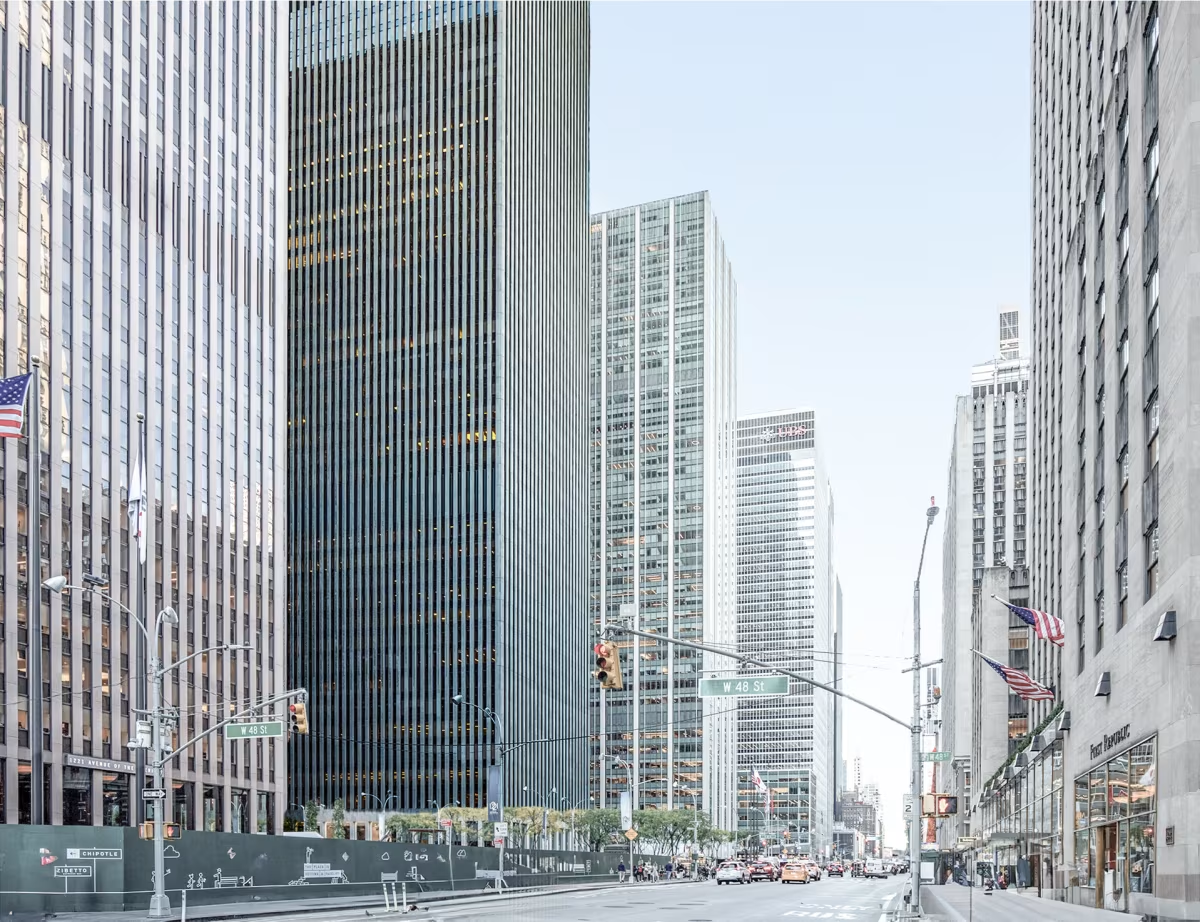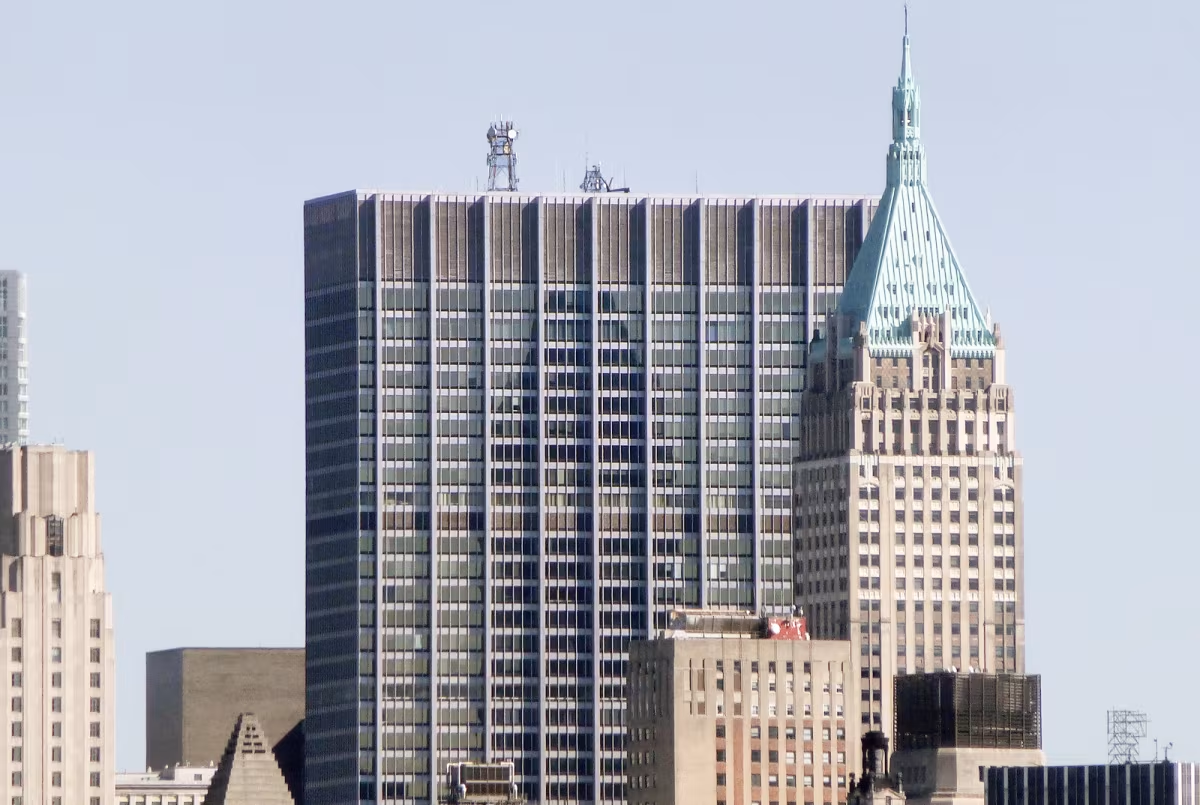1251 Avenue of the Americas Building vs 28 Liberty Street Building


Comparing the 1251 Avenue of the Americas Building and the 28 Liberty Street Building is interesting because they both rise in New York, NY, yet they were conceived by two different design teams, Harrison, Abramovitz & Harris and Skidmore, Owings & Merrill, and were completed at different points in time. They were finished more than a decade apart.
This contrast within the same city allows us to see how different creative minds interpreted the evolving needs of New York across time.
Let's take a closer look!
Height & Size
The 28 Liberty Street Building is clearly the larger tower of the two, both in terms of height and number of floors. It rises to 814ft (248m) with 60 floors above ground, while the 1251 Avenue of the Americas Building reaches 751ft (229m) with 54 floors above ground.
28 Liberty Street Building also offers more total built-up area, a total fo 2,240,000 sqf (208,103m2), which is about 138,887 sqf (12,903m2) more than what the 1251 Avenue of the Americas Building offers.
Of course, each project may have faced different briefs or regulatory constraints, which we don't really know about and could also explain the outcome.
Architectural Style
Both the 1251 Avenue of the Americas Building and the 28 Liberty Street Building were designed in line with the aesthetic conventions of the International Style style.
The 1251 Avenue of the Americas Building was designed at a moment when the International Style style was already in decline, making it more of a lingering expression of the movement. In contrast, the 28 Liberty Street Building style was already in decline, making it more of a lingering expression of the movement. In contrast, the 28 Liberty Street Building was built when the style still carried greater cultural weight.
Uses
Both the 1251 Avenue of the Americas Building and the 28 Liberty Street Building were designed to serve as commercial towers, and that has remained their main use since their completion, serving similar roles in the urban fabric.
Structure & Facade
The two towers rely on different structural systems, reflecting distinct engineering strategies.
The 1251 Avenue of the Americas Building uses a Trussed Frame structural system, which uses diagonal bracing in addition to beams and columns for stability, while the 28 Liberty Street Building uses a Frame system, that relies on a regular grid of columns and beams to sustain its weight.
Yet, when it comes to their facade, they both employed the same solution, a Curtain Wall facade.
A curtain wall is a non-load-bearing facade hung from the structural frame. It is anchored to floor slabs and transfers only its own weight and wind loads, allowing for sleek, glassy exteriors.
| 1251 Avenue of the Americas Building | 28 Liberty Street Building | |
|---|---|---|
| Harrison, Abramovitz & Harris | Architect | Skidmore, Owings & Merrill |
| 1963 | Design Started | 1955 |
| 1967 | Design Ended | 1957 |
| 1967 | Construction Started | 1957 |
| 1971 | Year Completed | 1961 |
| International Style | Architectural Style | International Style |
| Commercial | Current Use | Commercial |
| 54 | Floors Above Ground | 60 |
| 229 m | Height (m) | 248 m |
| 195200 | Built-up Area (m²) | 208103 |
| 36 | Number of Elevators | 37 |
| Trussed Frame | Structure Type | Frame |
| Steel | Vertical Structure Material | Concrete And Steel |
| Concrete And Steel | Horizontal Structure Material | Concrete |
| Yes | Facade Structural? | Yes |
| Limestone, Glass, Aluminum | Main Facade Material | Aluminum, Glass |
| George A. Fuller Co. | Main Contractor | Turner Construction Company |
| Rockefeller Group | Developer | Chase Manhattan Bank N.A. |
| Edwards & Hjorth | Structural Engineer | Skidmore, Owings & Merrill, And Weiskopf & Pickworth LLP |
| Pablo Picasso, Kan Yasuda And Hiroshi Senju | Collaborating Artist | Isamu Noguchi, And Jean Dubuffet |
| NY | State | NY |
| New York | City | New York |
| 1251 6th Avenue | Address | 28 Liberty Street |